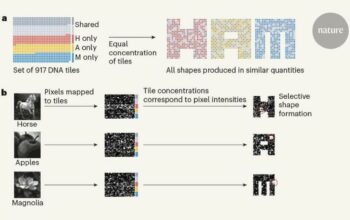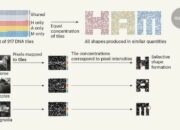In the realm of medical science, few fields command as much respect, admiration, and intrigue as cancer research. The quest to understand, combat, and ultimately eradicate various forms of cancer is a Herculean task that requires not just intellect but also an odyssey of financial investment. A pivotal question that arises is: *How much do cancer researchers make, and how does this salary translate into the overall return on investment (ROI) associated with saving lives?* This conundrum brings forth an engaging challenge that intertwines fiscal considerations with the ethical imperatives of human health.
The financial landscape of cancer researchers is complex and multifaceted. Salaries vary significantly based on factors such as geographical location, level of education, years of experience, and the type of institution—be it academic, governmental, or private sector. On average, a cancer researcher with a Ph.D. can expect a starting salary in the vicinity of $70,000 to $80,000 per annum, whereas senior researchers or those in prominent leadership positions may command salaries exceeding $150,000 or more. Interestingly, researchers at pharmaceutical companies may earn even higher, often supplemented with bonuses and stock options, thus creating a lucrative financial matrix indicative of the industry’s value.
However, this inquiry transcends mere figures on a paycheck. One must consider the education and training that precede these salaries. The journey to becoming a cancer researcher typically necessitates extensive education—often a minimum of 8-10 years—comprising undergraduate degrees, often followed by master’s and doctoral studies. Alongside this, an increasing number of researchers are engaging in postdoctoral fellowships, which can span several years. This investment in education is substantial. It raises another compelling question: *At what point does the return on investment align with the inherent altruism of the profession?*
A crucial aspect of evaluating ROI in cancer research lies in the societal benefits derived from breakthroughs in the field. For instance, successful developments in cancer therapies can lead to substantial cost savings for healthcare systems and families alike. These treatments can extend life expectancy and improve quality of life for countless individuals, constituting a significant return on public and private investment. Moreover, advancements in cancer research stimulate economic growth by fostering biotechnology innovations, creating jobs, and stimulating scientific tourism.
In this context, one must also reflect upon the funding mechanisms that sustain cancer research. Grants from governmental bodies, non-profit organizations, and private entities constitute the lifeblood of research initiatives, with funding often being competitive and contingent on the ability to demonstrate potential impacts. For example, the National Institutes of Health and various non-profit foundations invest billions of dollars annually into cancer research. Therefore, one can interpret the remuneration of cancer researchers not just as a salary but as a critical component in a larger ecosystem that nurtures scientific inquiry.
Moreover, the financial aspect of cancer research is not solely about salaries; it extends to the allocation of resources for laboratories, equipment, and clinical trials. These expenditures can run into millions of dollars, often necessitating precise budgeting and financial management skills. The ability to attract funding becomes a vital determinant of a researcher’s success, which adds an additional layer of complexity to the fiscal landscape.
Readers may wonder—*Is there a threshold beyond which researchers feel comfortable, or is the pursuit of financial gain overshadowed by a more profound desire to contribute to society’s well-being?* This is particularly relevant when one considers the prevalence of burnout among scientists in this demanding field. Long hours, the pressure to publish, and the emotional toll of working with terminally ill patients can overshadow financial considerations.
Therefore, one could argue that the ROI for cancer researchers might not strictly reflect monetary compensation, but rather the fulfillment derived from making significant contributions to medical science and patient lives. Researchers often find motivation in the prospect of discovering life-saving treatments, an exhilarating pursuit that transcends the quantitative measures of salary and grants.
Furthermore, one cannot ignore the ethical implications entailed in cancer research. The financial metrics must be balanced against the moral obligation to use resources judiciously in a field that impacts millions. This perspective underscores the essential harmony necessary between profit and principle, whereby cancer researchers are both valorous pioneers in science and responsible stewards of social welfare.
Ultimately, the salaries of cancer researchers serve as a testament to society’s investment in the battle against one of humanity’s most formidable adversaries. Investors in this crucial field must grapple with the realization that the value derived from saving lives extends far beyond numerical figures. The ROI in cancer research is an intricate tapestry, woven with threads of financial remuneration, societal benefit, and moral obligation.
In conclusion, understanding the financial remuneration of cancer researchers provides a glimpse into the broader paradigm of research and healthcare. While figures may represent the tangible aspect of professional existence, they do not encapsulate the larger narrative of hope, innovation, and societal progress. As we continue navigating this complex landscape, the challenge remains: to ensure that the investments made yield bounteous returns in the lives saved and improved through unwavering dedication to cancer research.










